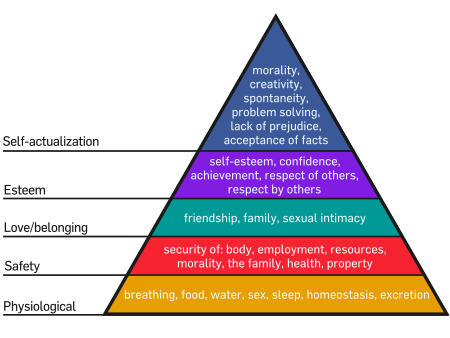Lesson 6: Frequency Counts and Emotional Development
Attention

Learning Outcomes
Upon completion of this lesson's material, students will be able
- Demonstrate competence completing frequency counts as an observation tool for measuring children's behaviors.
- Demonstrate understanding of the difference between prosocial and antisocial behaviors and how to provide an emotionally supportive classroom.
- Connect the observation with the appropriate MELDS.
Teaching
Read Chapter 5 in Week by Week
Children are learning about themselves as well as how to get along with others. Frustration, aggression and temper tantrums are normal behaviors children display as they are working to regulate their emotions and interact socially. It is important for providers to understand the reason behind the behavior and to provide an emotionally secure environment. This begins by establishing trust, responding to needs, creating consistent responses and limitations to unacceptable behavior and being a positive role model. The caregiver’s response to behavior can dramatically impact a child’s emotional development.
Prosocial behaviors are actions we want to encourage children to demonstrate, such as helping, sharing, hugging, using kind words, showing empathy, etc. Antisocial Behaviors are the opposite, such as hurting, name calling, using harsh words, bullying behaviors, etc. Teachers should help children learn the correct way to handle social situations. They can role-model, give students the appropriate words to use, offer social opportunities and encourage kindness, create a classroom culture of acceptance, etc. But we also need to be thoughtful of why children use antisocial actions. There are many reasons why a child may not act appropriately and if we can determine the cause, instead of only addressing the behavior, we will be more successful in correcting the issue.
Frequency Counts can be used to find out how often a behavior is occurring. It does not give the observer detailed information about the event, but it does offer valuable information about the time and amount. A caregiver might feel like a child is having tantrums all day long, but when she looks at the data, she will see that it is only 3 times a day, and right before meal times. Then she can take steps to correct the issue, such as encouraging the child to eat more during breakfast. FC’s can also be used to find out if an approach is working. For example, this teacher could encourage a bigger breakfast and then continue to do the FC’s to see if this has any effect on the number of tantrums. It can also be used to share specific information with parents.
Instead of saying “Joey has temper tantrums all day.”, the teacher can say “I have documented that Joey has a temper tantrum 3 times per day, right before meals.”. This helps the parent and teacher work together in a more specific way to fix the problem.
Psychological theorist Abraham Maslow created a pyramid that represents human development. His theory discusses the need for humans to have their basic safety and emotional needs met (bottom tiers of the pyramid) before they can further develop into social and functional beings. Basically- he claims that in order for children to be able to interact and learn, they need to have their physical needs met (ex: food, water, safety) and feel emotionally secure. This further emphasizes the importance on focussing on the emotional needs of children.

Part of this process is teaching them conflict resolution steps. For a while you will need to work with the children through the conflict resolution process, but with time and patience, the children will eventually be able to use this process independently for many situations. Here is a list of the conflict resolution steps:
1. Intervene: physically stand between the children, get down on eye-level, diffuse the argument with your physical presence.
2. Identify the problem: Have each child tell you his/her version of the issue.
3. Restate the problem: “I am hearing you say the problem is….”
4. Brainstorm possible solutions: Give each child the opportunity to offer solutions.
5. Choose the solution: Guide children to an agreement for resolution
6. Follow Up: Check back in with the children after a few minutes to ensure that the problem has been resolved.

If you google “conflict resolution steps”, you will find they are basically the same for both children and adults. That’s because the best way to handle a difficult situation is the same at every age. The sooner we teach children to handle this independently and confidently, the easier it will be for them to negotiate their social world!
Assessment
Lesson 6 Assignment
You will be using the Frequency Count Form for this assignment. Complete a frequency count observation as provided, focused on emotional development at an ECE setting that serves children between the ages of 3 and 8 years old. Choose a focus child. Examples for observation include but are not limited to: temper tantrums, solitary play, opportunities for sharing, etc.
Complete the summary, including your thoughts and opinions about the teacher’s interactions with the child-what went well and/or what could be changed to support this child. Note the appropriate MELDS this child demonstrated during your observation as stated in the section Emotional Development.
http://www.maine.gov/doe/publicpreschool/documents/Maine-ELDS.pdf
Obtain written permission from the appropriate person before you observe.
Submit a version of this form to the Lesson 6 Assignment Drop Box.
Lesson 1 Quiz
- Complete the exercise on page 151 of the text. In addition to the list, write one paragraph describing how the physical environment, curriculum or teacher interactions could help change at least one of the antisocial behaviors.
Lesson 6 Discussion
Describe a time when you witnessed an aggressive behavior in a young child. How was it handled? What type of aggression was being displayed? (pg 144 text) Now that you have read this chapter, would you handle this situation in the same manner? Why or why not?